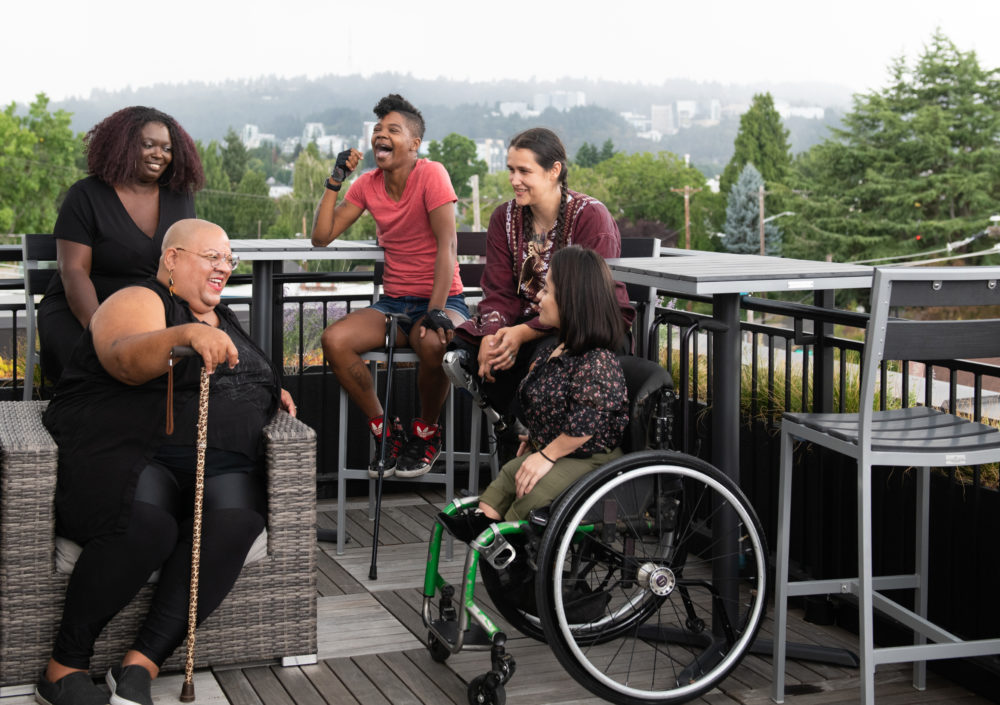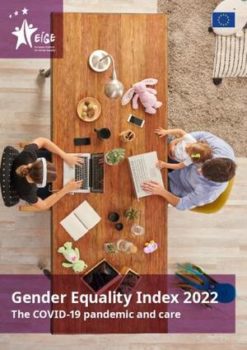European Gender Equality Week 2022 runs from 24 to 30 October. During this week, several European Parliament Committees and Delegations organised sessions addressing gender equality issues in their policy areas. The European Institute for Gender Equality also held the first Gender Equality Forum.
Gender issues are especially important for our work. Women and non-binary persons with disabilities face disproportionate discrimination and marginalisation. They face gender-based discrimination, disability-related discrimination, and – adding to that – also specific forms of discrimination that result from the intersection of their marginalised identities.

Gender Equality index presents disaggregated data
Significantly, the European Institute for Gender Equality (EIGE) presented the Gender Equality Index 2022, which includes data disaggregated by gender and disability.

Some highlights of the study include the following:
- Employment:: Only 20% of women with disabilities are in full-time employment. This is significantly lower than men with disabilities (28%), women without disabilities (48%) and men without disabilities (64%).
- Financial status: Women with disabilities earn much less – and have much less disposable income– than men with disabilities or people without disabilities. 23% of women with disabilities are at risk of poverty.
- Education: Only 15% of women with disabilities graduate from tertiary education (also called higher education). It is the lowest number in the set, behind persons without disabilities and men with disabilities. Notably, women without disabilities have a higher graduation rate than men without disabilities.
- Family and care responsibilities: 78% of women with disabilities do household chores daily, a rate comparable to women without disabilities and much higher than men with disabilities (40%) and without (30%).
- Health: 9% of women with disabilities have unmet healthcare needs. The figure is comparably the same as men with disabilities (8%) and much higher than women and men without disabilities (3% and 2%, respectively)
The Gender Equality Index 2022 also focuses on the socio-economic consequences of the COVID-19 pandemic. The social-distancing measures and stay-at-home orders imposed during the pandemic negatively impacted employment. The lack of a disability or gender perspective in the political response disproportionately harmed women (and non-binary people) with disabilities.
Our Advocacy
The impact of policy developments is never gender-neutral, and neither should be our advocacy. In recent months, we have been focusing on issues that include:
- Addressing unequal employment of women with disabilities, including under the proposed EU Directive on Pay Transparency, as a way to address unequal pay between men and women;
- Ensuring that persons with disabilities are included in the EU Directive on combating violence against women and domestic violence: we ask for a ban on forced sterilisation, ensuring accessibility of services and information (shelters, hotlines, access to justice), guaranteeing disability-related training and promote data and research regarding the intersection of gender and disability.
- Combatting trafficking of persons with disabilities – including the sexual exploitation of women and girls with disabilities;
- Better and more inclusive cancer screening and treatment – including breast cancer.
The EDF Women’s Committee guides and supports our work. We are also a member of the European Women’s Lobby, within which we advance the issues of women with disabilities within the feminist movement.
Contact:
Senior Human Rights Officer